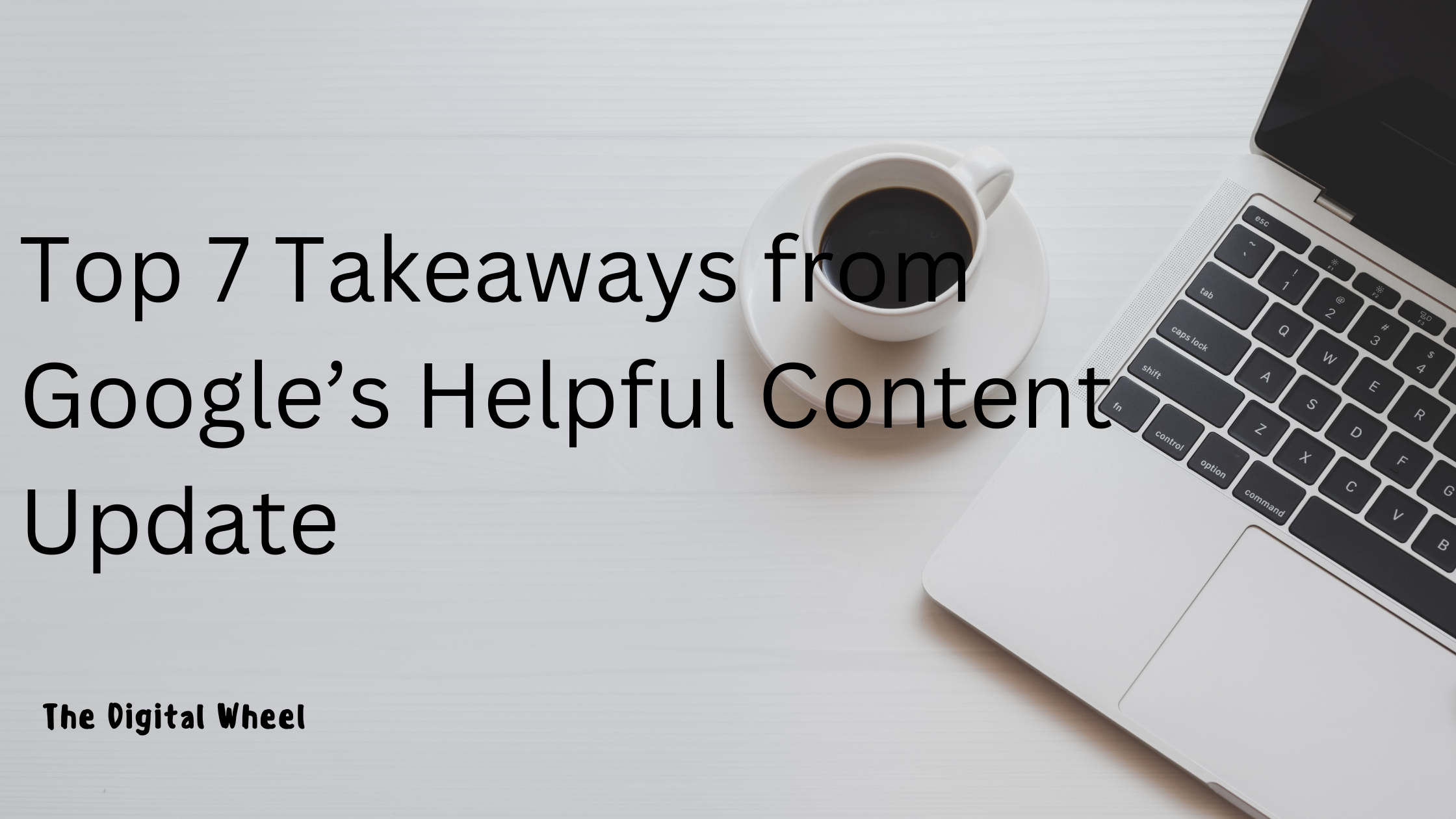Google’s helpful content update is out! And content creators, SEO specialists, and marketers are still trying to figure out the true impact of the update.
When Google first announced the helpful content update on its official search rankings update page, it was clear that the search engine would prioritize people-first content over content written for search engines.
However, we now know that certain factors determine if your content qualifies as people-first.
In this blog, I’ll try to educate you with an additional context or a few things you need to know about the helpful content update.
What do you need to know about the helpful content update?

Stick to the core topic
It might seem relatively self-explanatory, but worth mentioning. Google is trying to tell people to avoid wandering off their core topics when creating content.
To create content for the search by trying to add as many related search queries and topics in the discussion, there’s a high chance you might start talking and publishing content outside your niche.
Consider the example of someone like me creating content in the niche of content marketing, and he comes across some high-volume keywords related to mobile app development.
While the article on the mobile application might be helpful, my existing audience that comes to my website with the intent to learn about content creation and marketing will likely find it unhelpful.
Moreover, Google recommends us ask the following questions:
- Is the content aimed to please search engines or actual humans?
- Are you writing about things because of their high search volume keywords and they’re in trends? Or writing what your existing audience wants to read?
- Did you enter your niche to capitalize on getting search traffic without having any real expertise in the topics?
Demonstrate first-hand experience
I will not write about the best dental treatments for a root canal as I am not an expert in dentistry. Google tells people to avoid writing about stuff they do not know about.
Apparently, creating content for search engines means you’ll often write about topics, products, and services you haven’t had any personal experience with.
These types of pieces are usually tagged with affiliate links that earn the creator a certain amount of commission.
Since the creator isn’t equipped with real-world experience regarding the topic, any regular reader will immediately sense the detachment and won’t find it helpful.
On the other hand, if you have experience with the topic or product, make sure to add relevant images, statistics, and insights to showcase your credibility.
Don’t merge multiple topics into a single website
The “Jack of all, master of none” approach isn’t something that Google recommends for websites or blogs. In other words, Google implies that websites should have their niche(s) defined.
Talking about too many topics on your website is unhelpful for both the search engine and the visitors. Both Google and visitors will find it confusing to understand your website and its core expertise.
Create content around a single broad topic, and you can always create clusters into multiple sub-domains stemming from that subject area.
Provide adequate answers to the users’ search queries
Whatever type of content asset you create for any stage in the marketing funnel. Ask yourself: after reading the piece, will the reader leave having learned something or be able to complete a task?
What Google is trying to say here is that your content should make people more knowledgeable than they were before reading it.
Unsurprisingly, when people create content to satisfy the search engine algorithms, it is often done at the expense of offering little to no value to the readers.
The content should answer the user’s question or solve a concern that led them to your blog in the first place. Ask yourself the following questions:
- Does your content leave the readers feeling that they need to start researching again to acquire better information from other sources?
- Do you believe Google prefers blogs within a certain word count range?
Your content pieces should be value-added enough to tempt the readers not to search again elsewhere, and yes, Google doesn’t prefer any word count limit.
Take care of the overall reader experience
When we create something for others, we’re crafting an experience for them. Do remember about taking care of the overall experience of consuming a particular piece of content.
Content creators often fall under the impression that a flawless piece free of every grammatical and content-related error will also translate into a great experience.
It’s very much possible that even after catering to all the above tips, the end product won’t guarantee the right experience for the readers.
Consider the example of reading a blog on top web design trends. The piece doesn’t contain visuals of app-like experiences, one-page websites, art deco motifs, oversized typography, etc.
Or a blog on how to conduct keyword research without adding images of the keyword research process in Ahrefs, SEMrush, etc.
While readers may find your content textually relevant, adding a decent number of clear, attractive visuals will complete the reading experience.
You want to provide an all-you-can-shop experience to the visitors without giving them a reason to look elsewhere.
Don’t attempt to answer a highly debatable question
A significant part of the helpful content update is relevance. Hence, Google has been cautioning websites time and time again to avoid making claims that aren’t factual or have no authentic answers.
Clarify your thoughts to the readers if you’re writing something which isn’t definite, rumored, and pretty debatable.
Besides complying with the new Google update, you’re also building authority in your content and trust with your readers.
Follow Google’s guidelines for other critical updates
The helpful content update isn’t a standalone bible for content creators to assert their faith.
Google suggests that instructions and guidance related to regular core updates and product review updates also complement the helpful content update.
If you’re already adhering to the guidelines underlined in the core updates and product review updates. There is a high chance that your website will also benefit from the helpful content update.
Final thoughts!
The helpful content update is affecting all the English searches and will eventually expand to other languages in the future too.
This isn’t the first Google update regarding helpful content; it certainly won’t be the last. In its earlier announcement, Google said it would continue releasing future updates to back up content improvement and detect unhelpful content.
However, that doesn’t mean that updates like these always mean a significant shift. The helpful content update was just as hyped as Penguin and Panda were a decade ago. But we still have to give it some time to see noticeable changes.
If you’re doing great content for the readers, you’ll do fine!
Related content: Why You Need to Put ‘Marketing’ Back in ‘Content Marketing’



